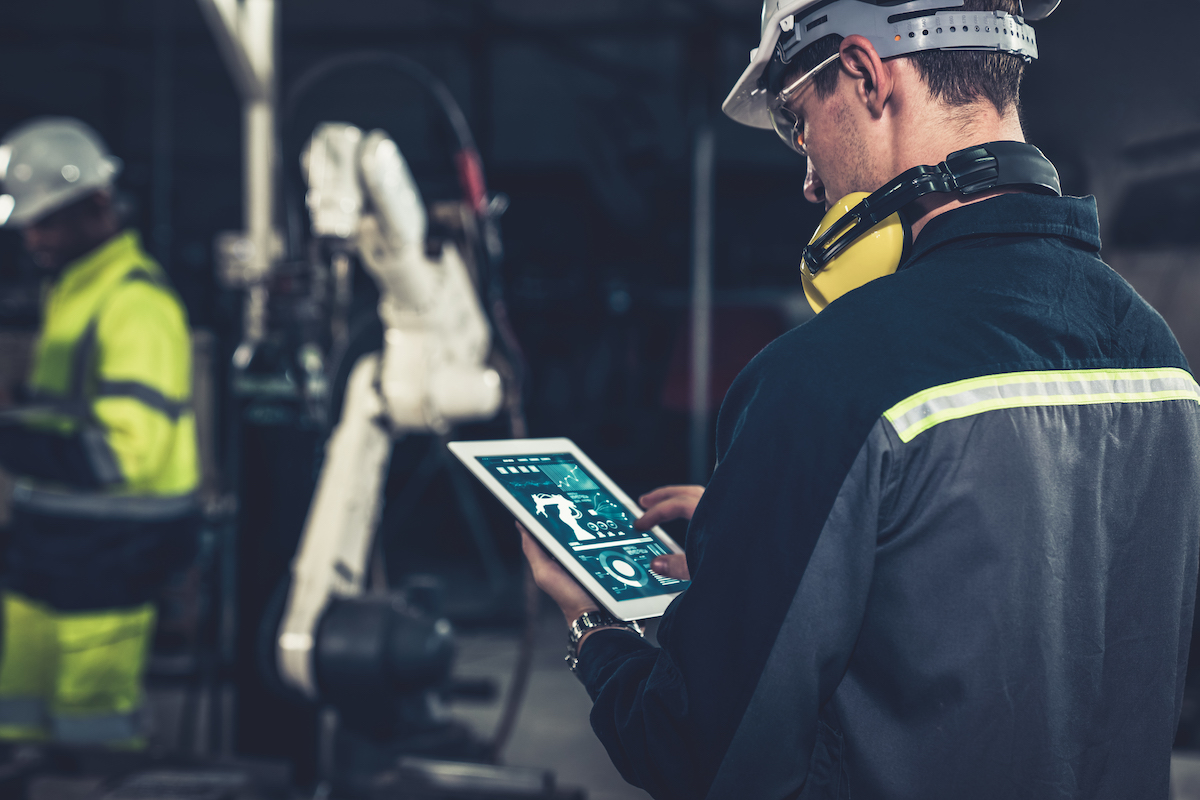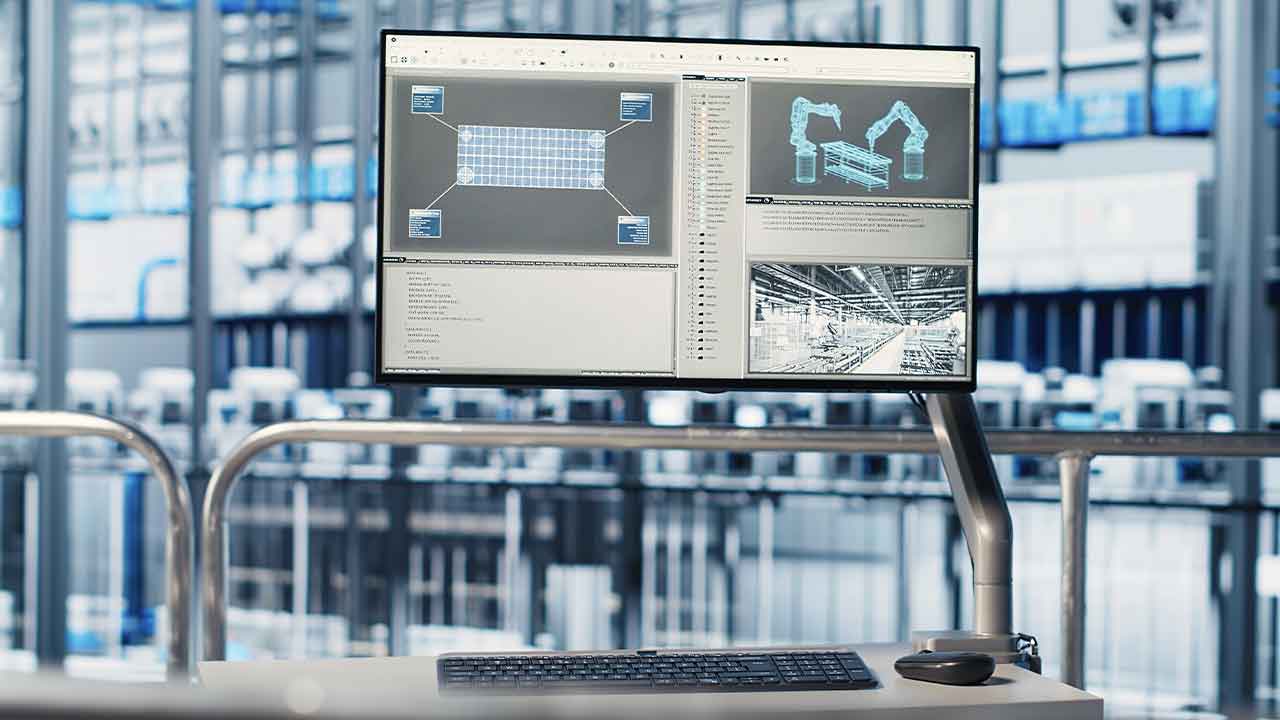IIoT and Advanced Condition Monitoring: The Future of Industrial Excellence
In the industrial landscape, one of the most pressing challenges faced by organisations is the unpredictability of equipment failures. Such unplanned downtimes not only result in significant financial losses but also disrupt the entire production chain, leading to missed deadlines, compromised product quality, and strained customer relationships. The traditional reactive approach to maintenance, where equipment is repaired only after a failure, is no longer sustainable in today’s competitive market. Enter the realm of advanced condition monitoring, powered by the Industrial Internet of Things (IIoT).
What is Advanced Condition Monitoring and How IIoT Technology Enables It
Advanced condition monitoring is a sophisticated approach that emphasises the continuous observation of machinery health and performance. Its primary objective is to preemptively identify and address potential issues. By doing so, it ensures that machinery operates at its optimal efficiency, moving away from the traditional ‘wait-for-breakdown’ method. In today’s fast-paced industrial landscape, businesses are increasingly leaning towards predictive strategies to prevent failures and maintain peak equipment efficiency.
The role of IIoT in advanced condition monitoring is pivotal. IIoT devices, especially sensors, are meticulously positioned on machinery, enabling them to continuously collect vital data. This data, which encompasses metrics such as temperature readings, vibration levels, and pressure measurements, forms the foundation of advanced condition monitoring. Continuous data collection provides the necessary insights to detect anomalies in real-time, ensuring timely interventions.
But the data collection is just the beginning. The colossal amounts of data harvested by IIoT devices undergo rigorous processing and analysis using state-of-the-art algorithms. These algorithms are adept at identifying patterns, detecting anomalies, and even predicting potential equipment failures. The insights derived from this data analysis are invaluable. They not only predict potential issues but also recommend preventive actions, ensuring machinery health is always maintained.
The Benefits of IIoT Driven Advanced Condition-Based Monitoring
In today’s industrial landscape, the marriage of IIoT with advanced condition monitoring is ushering in a new era of operational efficiency and machinery health. This synergy is not just about technological advancement; it’s about tangible benefits that directly impact the bottom line of businesses. Let’s delve deeper into these benefits:
1. Addressing Problematic Asset Downtime
In the intricate web of industrial manufacturing, unplanned downtimes emerge as one of the most formidable challenges, casting a shadow on operational efficiency and financial stability. A report from Forbes underscores the gravity of this issue, revealing that industrial manufacturers grapple with a staggering $50 billion in losses annually due to these unforeseen halts. These downtimes, irrespective of whether they are scheduled, can devour anywhere from 1% to 10% of an organisation’s productive bandwidth.
The genesis of these downtimes is complex and varied. While equipment malfunctions—stemming from wear and tear or component failures—are common culprits, human errors, stemming from misjudgments or lapses in operational protocols, also play a significant role. The ramifications of these downtimes are not just confined to the immediate operational halt. They ripple through the production chain, leading to reduced productivity, missed production milestones, and a domino effect of delays across interconnected processes. This is not an isolated issue; a study from IIoT World elucidates that an overwhelming 82% of companies have been ensnared by unplanned downtime in the recent three-year span. Further amplifying the concern, data from Henkel Adhesives suggests that such downtimes can precipitate a productivity nosedive of 5% to 20%.
Amidst this backdrop, the Industrial Internet of Things (IIoT) emerges as a beacon of transformative potential. IIoT’s prowess in advanced condition monitoring transcends the mere deployment of sensors on machinery. It represents a paradigm shift towards a data-centric approach to machinery health. By continuously capturing a plethora of data points—vibration levels, temperature gradients, pressure fluctuations, and more—IIoT devices offer a granular view of equipment health in real-time. Sophisticated algorithms, underpinned by machine learning and artificial intelligence, then sift through this data, identifying patterns, predicting potential failures, and even suggesting preemptive interventions.
This predictive intelligence empowers businesses to transition from reactive to proactive maintenance strategies. By foreseeing potential machinery issues, they can adeptly schedule maintenance activities during non-critical operational windows, thereby ensuring that the core production processes hum along with minimal disruptions.\
2. Maximising Asset Longevity with IIoT-Driven Advanced Condition Monitoring
The longevity and reliability of industrial machinery stand as cornerstones for operational success. In this landscape, the Industrial Internet of Things (IIoT) has emerged as a transformative force, offering unparalleled condition monitoring capabilities that directly bolster equipment lifespan.
At the heart of this revolution is the power of real-time monitoring and analysis. IIoT devices tirelessly capture and process vast amounts of data, spanning parameters like temperature, vibration, humidity, and pressure. By continuously analysing this wealth of information, businesses can swiftly pinpoint even the most subtle deviations from optimal operating conditions. Such early detection and intervention stave off potential long-term damage, ensuring machinery remains in peak condition.
Ensuring machinery operates within its optimal parameters is another facet where IIoT shines. For instance, if a system detects a motor overheating, it can autonomously tweak the operating conditions or signal the maintenance crew. Such proactive measures shield machinery from conditions that might hasten degradation.
The ability of IIoT systems to archive and analyse historical data further amplifies their value. By sifting through this accumulated data, businesses can discern long-term trends and recurring issues, offering a roadmap to address systemic challenges that might be curtailing machinery lifespan.
Lastly, many industrial machines owe their longevity to proper lubrication. With IIoT-driven sensors vigilantly monitoring lubrication levels and quality, machinery components receive the optimal lubrication they require, minimising friction and subsequent wear.
3. Revolutionising Operational Efficiency and Resource Optimisation
Operational efficiency, a cornerstone of successful businesses, encompasses a broad spectrum of elements, from product quality and delivery timelines to the optimal utilisation of resources. The integration of the Industrial Internet of Things (IIoT) with condition monitoring systems has ushered in a new era of industrial operations, offering a plethora of tangible benefits.
At the heart of this transformation is the promise of consistent product quality. With machinery operating seamlessly, informed by real-time data from IIoT devices, businesses can ensure that every product rolling off the production line meets the highest quality standards. This real-time data not only provides insights into the health and performance of equipment but also enables timely interventions, drastically reducing the chances of producing sub-standard products.
Resource optimisation stands as a paramount concern for industries aiming to maximise their operational efficiency, and this is where the prowess of IIoT-driven condition monitoring becomes evident. By leveraging the IIoT, industries can gain granular insights into the performance of various resources, spanning from intricate machinery components to the broader scope of human capital. Such detailed insights enable businesses to make data-informed decisions, ensuring that every resource is utilised to its fullest potential.
For instance, a report by Accenture highlighted that companies implementing IIoT-based monitoring could witness a 30% reduction in maintenance costs and a 70% decrease in downtime. This not only translates to significant cost savings but also ensures that machinery is running at its optimal capacity, leading to increased output. Furthermore, when it comes to human capital, IIoT-driven analytics can help in identifying workforce trends, predicting potential bottlenecks, and ensuring that the workforce is deployed where they can add the most value, thereby preventing burnouts and enhancing productivity.
Conclusion
In the ever-evolving industrial landscape, the marriage of the Industrial Internet of Things (IIoT) with advanced condition monitoring stands as a testament to the power of innovation. By addressing the age-old challenges of equipment failures and unplanned downtimes, IIoT ushers in a new era of predictability, efficiency, and longevity. The continuous real-time insights and granular data analysis offered by IIoT are not mere technological advancements; they represent a transformative shift in how industries operate. Businesses that embrace this synergy are not only poised to drastically reduce operational costs but also to elevate their product quality, extend machinery lifespan, and optimise resource utilisation. As we look to the future, it’s clear that IIoT-driven condition monitoring will be the linchpin of industrial success, setting new benchmarks for operational excellence and sustainability.
About the author
This article was written and researched by Charlie Green, Senior Research Analyst at Comparesoft.



